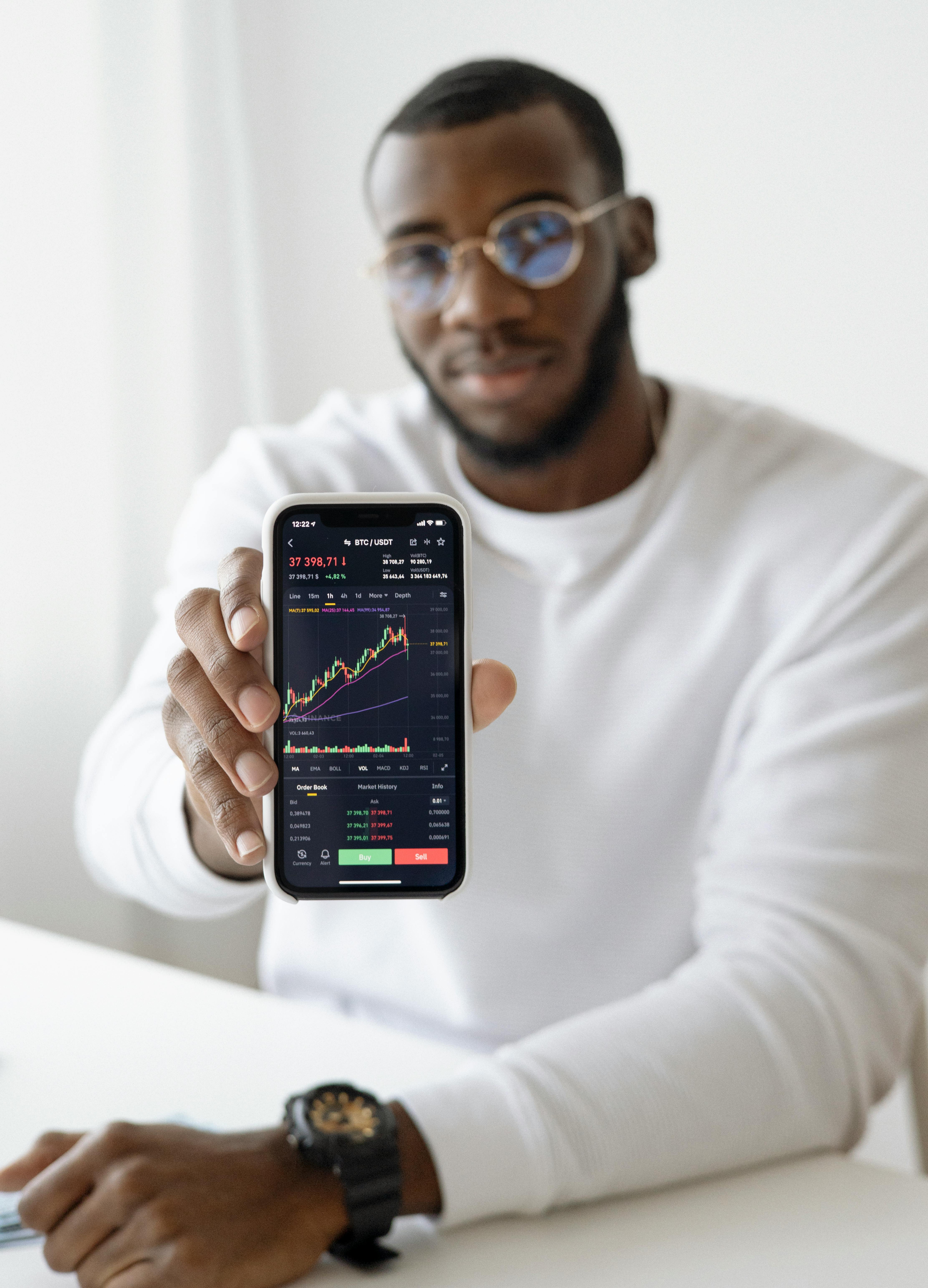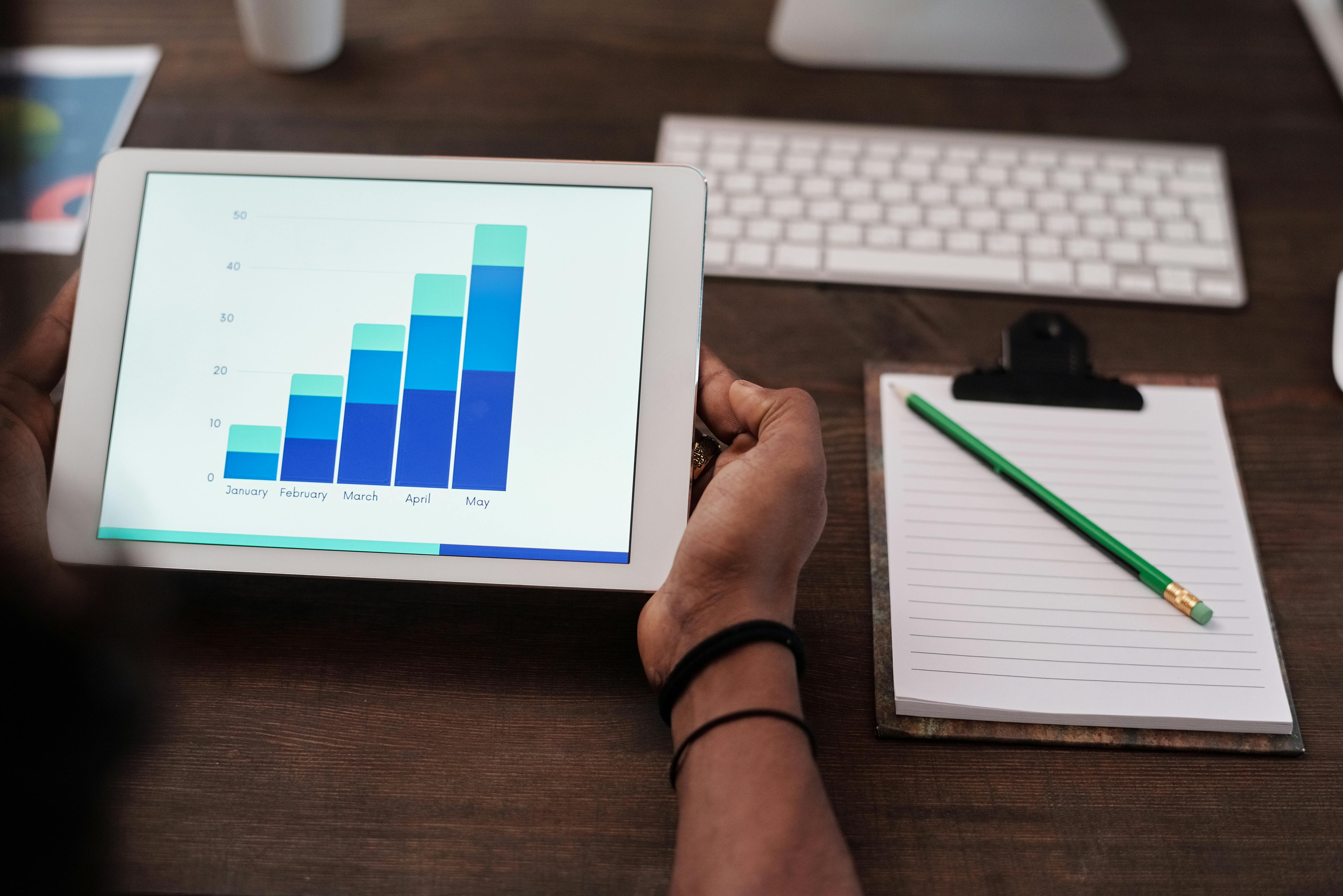Digital Banking 2025: How AI and Fintech Are Reshaping the American Financial Landscape
In 2025, banking in the United States is no longer defined by marble floors or long queues — it’s happening on screens powered by artificial intelligence, cloud computing, and predictive analytics. The modern American consumer expects speed, security, and personalization, and digital banks are racing to deliver exactly that.
The financial industry, once dominated by legacy institutions like JPMorgan and Wells Fargo, is now competing with agile fintech startups such as Chime, SoFi, and Revolut. These neobanks are using AI to automate credit checks, detect fraud, and even offer personalized investment advice in real time.
Why Digital Banking Dominates 2025
The COVID-19 pandemic accelerated the shift toward online banking, but by 2025, it’s innovation — not necessity — that drives digital adoption. Over 78% of Americans now use mobile banking apps weekly, while more than half manage all their finances digitally without ever visiting a branch.
- 💡 Speed: Instant payments through AI-optimized clearing systems.
- 🧠 Intelligence: Predictive analytics offering custom financial advice.
- 🔒 Security: AI-based fraud detection protecting users 24/7.
- 🌎 Accessibility: Banking for everyone — from small towns to global travelers.
Digital banks are no longer secondary options; they’re the financial backbone of the new economy. Whether it’s applying for a mortgage, trading crypto, or paying bills, everything happens within a unified ecosystem powered by machine learning.

AI and Fintech: The Twin Engines of the New Banking Era
AI and fintech have merged into what analysts call the “Smart Finance Movement.” Algorithms are now managing credit scoring, risk assessment, and personalized offers. Every transaction adds to a user’s data profile, which AI uses to predict financial needs before they arise.
1. AI-Powered Credit Decisions
Gone are the days of waiting weeks for loan approvals. In 2025, AI-driven credit scoring tools analyze thousands of variables — from transaction history to spending behavior — delivering instant results. Companies like Upstart and LendingClub use these models to extend fairer loans, even to those with limited credit history.
2. Predictive Financial Planning
Modern digital banks are not just places to store money; they’re personal financial assistants. Apps now provide predictive insights, alerting users about potential overdrafts or suggesting optimal investment opportunities.

The Rise of the Cashless Generation
Generation Z and Millennials, who now make up most of the U.S. workforce, rarely carry cash. For them, financial freedom equals digital convenience. According to Statista (2025), over 86% of Gen Z consumers prefer neobanks or mobile-only financial platforms.
This shift is forcing traditional banks to reinvent themselves — merging with fintech startups, building in-house AI labs, and launching digital-only subsidiaries to stay relevant.
“In 2025, the most powerful currency isn’t the dollar — it’s data.” — Monica Lewis, Fintech Economist at Global Data Bank
Cybersecurity and Trust in a Digital-Only Era
As banks become entirely digital, cybersecurity has become the cornerstone of customer trust. In 2025, the line between banking and data protection has blurred — your bank is not just a vault for money, but a guardian of your identity. The digital transformation of finance has made AI-driven security systems essential for survival.
Modern banks employ layered defense systems: biometric logins, AI-based anomaly detection, and blockchain-backed verification. These technologies don’t just prevent fraud — they predict it. For instance, the system might flag a $1,000 withdrawal in another state milliseconds after you swipe your card in your city.

How AI Detects Fraud Before It Happens
AI-powered algorithms analyze spending patterns, geolocation, device fingerprints, and behavior history to identify unusual activity. Systems like Visa Advanced Authorization and Mastercard’s Decision Intelligence are capable of analyzing over 500 risk variables in less than a second.
In 2025, even small credit unions and community banks are integrating these tools, making cyber resilience a standard, not a luxury. Banks that fail to invest in AI risk losing both customers and compliance certifications.
“In digital banking, trust is built not by handshakes, but by encryption keys and machine learning models.”
— Daniel Ortiz, Chief Security Officer at FinTrust Labs
AI in Customer Experience: The Human Touch of Technology
While AI handles complex risk assessments and automation, its biggest revolution is in customer experience. Chatbots and voice assistants powered by natural language processing (NLP) can now resolve 90% of customer queries instantly, 24/7.
Customers no longer dread long phone queues or hidden fees — digital assistants explain products, recommend saving strategies, and even offer investment tips tailored to your income level and goals. The banking relationship has shifted from transactional to conversational.

Case Study: Wells Fargo’s “Fargo” AI Assistant
Wells Fargo introduced “Fargo,” its AI-driven assistant, in 2024. Within a year, it handled over 200 million customer interactions. Users reported a 45% faster issue resolution rate and a 30% increase in customer satisfaction. Fargo’s success demonstrates how AI can scale empathy — by delivering smart, fast, and human-like support.
Meanwhile, neobanks like Chime and Varo are pushing personalization further by using emotion-recognition algorithms to detect frustration in messages and adjust tone dynamically.

The Ethical Dilemma: Balancing Data and Privacy
With great data comes great responsibility. AI’s hunger for personal information poses a new challenge — how can banks innovate without overstepping privacy? Regulators like the Consumer Financial Protection Bureau (CFPB) have tightened policies, forcing fintech companies to disclose how algorithms make financial decisions.
To maintain transparency, banks are adopting “explainable AI” — systems that show customers why they were approved, declined, or offered specific rates. This transparency fosters trust and ensures compliance with privacy laws like California’s CCPA and Europe’s GDPR.
The Transformation of Investment Banking in 2025
In 2025, investment banking has entered a new digital age. Gone are the days of floor traders yelling on Wall Street — now, algorithms handle billions in transactions per second. Major banks like J.P. Morgan and Goldman Sachs have transitioned to hybrid AI-fintech systems that use real-time analytics to optimize portfolios, assess risk, and even forecast market shifts before they happen.

Algorithmic Banking: Smarter Than Human Intuition
AI trading systems, often called “robo-advisors for institutions,” can process millions of data points simultaneously — something no human trader could ever achieve. These systems integrate environmental, social, and governance (ESG) metrics, predicting how global events might affect portfolios.
For example, during the 2024–2025 market rebound, J.P. Morgan’s AI platform reduced exposure to unstable energy assets weeks before crude oil prices dropped by 14%. That move alone saved clients an estimated $6.3 billion.
Case Study: Chime’s Rise as a Data-Driven Challenger Bank
Chime, once a simple mobile bank, evolved into a powerful data intelligence company by 2025. Its proprietary algorithm, PulseAI, uses customer transaction data to predict credit risk, spending patterns, and savings behavior. The result? Personalized products that increased customer retention by 60%.

Fintech challengers like Chime, Varo, and Revolut have proven that agility beats tradition. While legacy banks focus on compliance, these startups innovate faster, testing new financial models in weeks rather than years.
The Slow Death of Physical Bank Branches
By 2025, physical bank branches in the U.S. are vanishing faster than ever. According to FDIC data, over 6,000 branches closed between 2020 and 2025. In their place, digital “experience centers” have emerged — spaces where customers explore apps, get digital onboarding assistance, and consult AI-powered financial planners.
For traditionalists, this shift is bittersweet. Banks like Wells Fargo and Bank of America now maintain only 30% of their 2018 branch footprint. The new focus? Reducing real estate costs and investing those savings into cybersecurity and cloud infrastructure.

Customer Behavior: The Catalyst for Change
Consumers no longer want brick walls — they want instant service. A Deloitte 2025 report found that 74% of Americans trust digital-only banks as much as traditional ones. Gen Z, in particular, prefers the seamless nature of mobile-first banking over in-person visits.
“We’re not closing branches — we’re transforming experiences.” — Sarah Mitchell, VP of Digital Strategy, Bank of America
This new generation expects to open accounts in minutes, get investment advice instantly, and receive real-time fraud alerts — all without ever speaking to a human teller. For banks, adapting isn’t optional; it’s survival.

The Future: Hybrid Banking Ecosystems
The next chapter of banking isn’t fully digital or fully traditional — it’s hybrid. Customers will choose whether they want AI automation, human advice, or both. Hybrid models will define how major institutions compete with neobanks in the years ahead.
J.P. Morgan, Citi, and Goldman Sachs are already developing AI-human collaboration centers that combine empathy with algorithmic precision — proving that the best financial decisions often come from a partnership between humans and machines.
The Digital Dollar Revolution: Banks and the Future of Cryptocurrency
In 2025, digital currencies are no longer the “wild west” of finance — they’ve gone mainstream. The U.S. government’s pilot project for the Digital Dollar (CBDC) has entered full-scale testing, and major banks like JPMorgan Chase and Wells Fargo are already integrating blockchain rails into their internal payment networks.
Unlike decentralized cryptocurrencies like Bitcoin or Ethereum, the Digital Dollar is fully regulated by the Federal Reserve. This means faster settlements, zero transaction fees for consumers, and instant international transfers — all powered by cryptographic security instead of traditional SWIFT systems.

How Banks Are Integrating Crypto Infrastructure
Traditional banks are partnering with fintech and blockchain startups to modernize infrastructure. Goldman Sachs has built an internal blockchain for institutional clients, while Citi introduced CitiToken Services to replace wire transfers with tokenized cash equivalents.
This shift has reduced cross-border transaction times from 3 days to less than 30 seconds. In 2025, even smaller credit unions use token-based settlement layers built on private blockchains — ensuring compliance while improving efficiency.
“Blockchain isn’t replacing banks — it’s rebuilding them from the inside out.” — Dr. Evelyn Cooper, Blockchain Economist at MIT
Fintech apps like Robinhood and SoFi have accelerated adoption by making crypto trading as simple as a swipe. Meanwhile, digital banks like Revolut offer hybrid accounts that seamlessly blend fiat and crypto balances.

Smart Contracts and the Rise of “Programmable Banking”
Smart contracts — once a niche idea — are now central to how banks process financial products. Imagine your mortgage adjusting its rate automatically when your credit score improves, or your investment portfolio rebalancing itself after market shifts. That’s programmable finance.
Banks in 2025 use AI-linked smart contracts that execute transactions without human intervention but remain auditable and transparent. These contracts are connected directly to customer data streams, allowing for dynamic pricing, real-time credit scoring, and adaptive loan structures.

Real-World Example: Mortgage Automation
In 2025, over 40% of new mortgages in the U.S. are processed with AI-backed smart contracts. Platforms like Blend Labs and Figure Technologies have automated underwriting, cutting approval times from weeks to hours.
This automation doesn’t just save time — it slashes costs. Banks report up to a 60% reduction in administrative expenses and near-zero compliance errors. Customers, meanwhile, enjoy real-time visibility into every step of their loan or refinancing process.

Beyond Finance: The Bank as a Lifestyle Platform
As digital ecosystems expand, banks in 2025 are evolving into all-in-one lifestyle platforms. They no longer just hold your money — they manage your digital identity, subscription payments, insurance, and even your carbon footprint.
J.P. Morgan’s new app ecosystem, ChaseLife, integrates personal budgeting, travel bookings, and sustainable investment portfolios in one interface. Meanwhile, SoFi’s “Smart Wallet” rewards customers with lower loan rates for healthy financial habits like saving regularly or avoiding overdrafts.

This merging of fintech, lifestyle, and social responsibility has made modern banking more human — even without branches. The financial world is now defined not by vaults, but by algorithms that care.
The Human Side of Digital Banking
Despite the dominance of algorithms, data, and machine learning, the future of digital banking is still — at its core — about people. Every innovation in fintech, from AI chatbots to biometric authentication, serves one simple goal: to make financial life more accessible, secure, and personal.
Banking in 2025 is no longer about the rich or the elite. It’s inclusive. People with no credit history can now access micro-loans instantly through AI-powered risk models. Immigrants can transfer funds globally in seconds. Single parents can automate savings for their children’s education — all from their phones.

Emotional AI: The Next Big Leap
The next frontier of banking innovation lies in understanding emotion. Emerging Emotional AI systems are now capable of reading user tone, behavior, and stress levels to personalize financial advice. If your spending spikes or your tone suggests anxiety, your digital bank might offer calming financial guidance or a savings plan.
This level of empathy — driven by data — redefines trust. Studies from McKinsey show that banks using emotion-aware AI see 45% higher customer loyalty and 30% lower churn rates.

Cybersecurity and Digital Trust
However, with great innovation comes great risk. Cybersecurity remains the single biggest concern in the digital finance era. According to IBM’s 2025 Security Report, the financial industry faces 25% of all global cyberattacks — more than healthcare or government sectors combined.
Banks have responded with multi-layered defenses: quantum encryption, behavioral biometrics, and AI-based anomaly detection. Every transaction, login, or data request passes through hundreds of validation points in milliseconds.

Yet, the biggest trust factor isn’t technology — it’s transparency. When banks clearly communicate how they use data, customers reward them with loyalty. 87% of U.S. consumers in 2025 say they prefer digital banks that “show how algorithms make decisions.”
The Decade Ahead: A World Without Financial Borders
As we move beyond 2025, the boundaries between banks, fintechs, and technology giants will blur completely. Apple Pay, Google Wallet, and even Tesla Finance are competing for the same customers as Chase and Wells Fargo. The future isn’t about who owns the bank — it’s about who owns the customer experience.
The next generation will open an account with a voice command, invest using an AI assistant, and apply for a loan with facial recognition — all in less than 60 seconds. Financial freedom will no longer depend on geography or legacy institutions.

Case Study: Chase’s Journey to Full Digitalization
Chase Bank serves as the gold standard for large-scale transformation. Between 2020 and 2025, Chase reduced physical branches by 50% while doubling digital revenue. Its mobile app now hosts over 60 million users, powered by Chase GPT — an AI assistant that provides personalized investment insights, real-time fraud detection, and predictive cash flow management.
Chase GPT alone has saved customers over $2.1 billion by optimizing spending habits and identifying unnecessary fees. That’s not just technology — that’s progress.

Conclusion: The Bank of the Future Is You
In 2025, the word “bank” doesn’t describe a building — it describes a network of smart technologies designed around your life. It learns, protects, and grows with you. Every tap, transfer, and transaction is part of a data symphony that builds your personal financial future.
Digital banking isn’t just about automation — it’s about empowerment. The power to understand your money, control your goals, and build a better tomorrow. And in this new world, you are no longer just a customer. You’re the CEO of your own financial universe.

Call to Action
Explore the best digital banks of 2025 — compare features, rewards, and AI-driven insights. Whether you’re saving, investing, or borrowing, the future of banking is already in your hands. 💳💡
